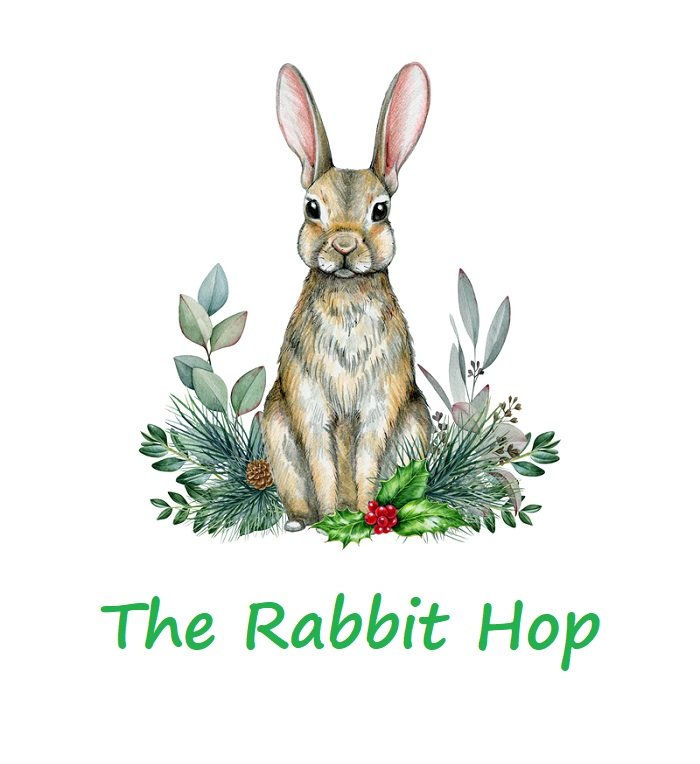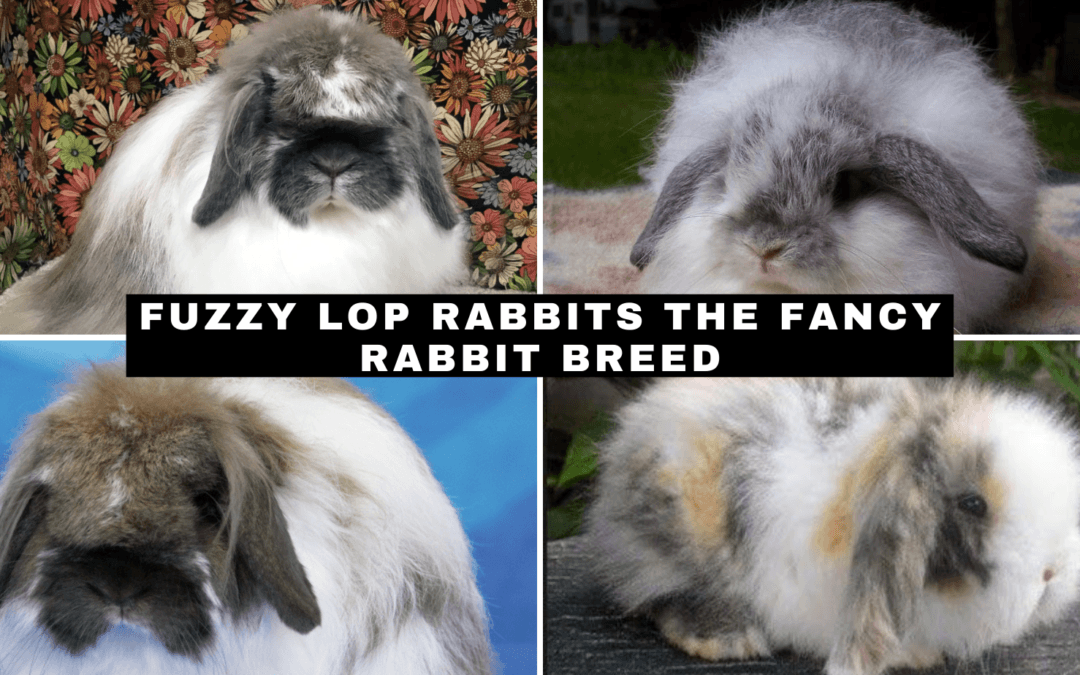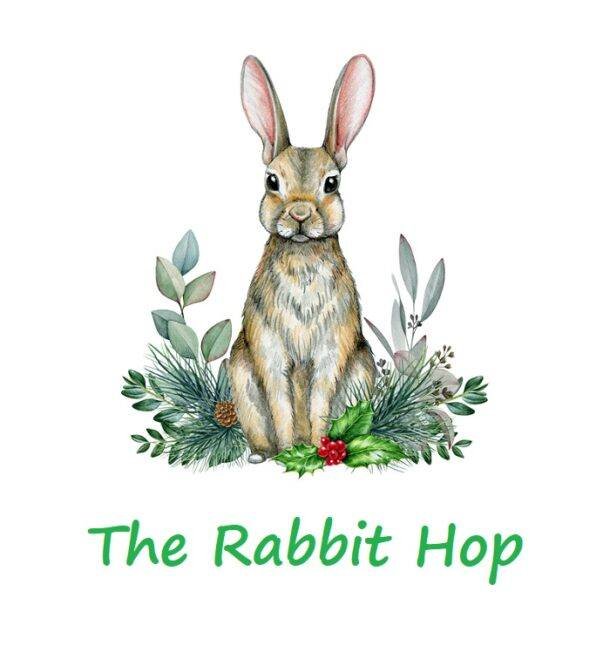The Fuzzy Lop Bunnies are often mistaken as Holland Lops. But you can easily distinguish them through their fur. Thanks to their wooly coats! Their frizzy wool is also perfect for their playful, fun, and active personality. If you want to know more about this fancy rabbit breed, continue reading!
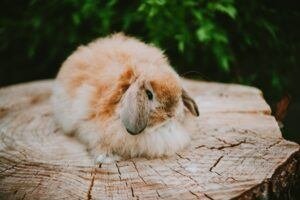
American Fuzzy Lop
Quick Facts About American Fuzzy Lops
| Body Size | Dwarf |
| Body Weight | 3.5 to 4 lbs |
| Body Shape | Short and compact |
| Life Span | 5 to 8 years |
| Colors | Pointed white and agouti (squirrel, chinchilla, opal, lynx, and chestnut) |
| Rarity | Rare outside the United States |
| Similar Breeds | French Angora, Holland Lop |
| Best Suited for | Families with small children and new rabbit owners |
| Origin | United States |
Background and History
The American Fuzzy Lop’s existence is connected to the Holland Lop and its development is intricately linked to the quest for specific coat characteristics. Originally, the Holland Lop gene pool possessed distinguished rollback fur but lacked the desired broken patterns. To address this, some breeders strategically bred the Holland Lop with English Spots to introduce the broken patterns. However, despite achieving the desired coat patterns, the offspring still lacked the rollback feature. It wasn’t until the establishment of the American Fuzzy Lop breed, recognized by the American Rabbit Breeders Association, that both the rollback fur and the desired broken patterns were successfully combined, resulting in a distinctive and sought-after rabbit breed.
The breeders wanted the rollback, so they bred the Holland Lop to French Angoras. As we know, French Angoras are popular because of their gentle rollback coat. The result of this breeding was the occasional appearance of a fuzzy Holland. Some breeders saw the marketability of this breed as an opportunity. One of them was Patty Greene-Karl.
Greene-Karl realized that the “fuzzy gene” was recessive. Thus, she bred two Holland Lop rabbits with recessive genes. For four years, she developed it. She called this new breed “American Fuzzy Lop.” Greene-Karl introduced it during the American Rabbit Breeders Association (ARBA) Convention. It was in 1985 in Houston, Texas. After four years, ARBA recognized the fuzzy lop rabbits. In 1989, Herbie represented the Fuzzies by becoming the first Best of Breed (BOB). It happened during the ARBA Convention in Tulsa, Oklahoma.
Features of Fuzzy Lop Rabbits
Fuzzy lop rabbits look like Holland Lops, but they have distinct features. If you are not sure whether your rabbit is an American Fuzzy Lop vs Holland Lop, you can check below what it looks like:
Body Size
The average weight of a full-grown American Fuzzy Lop is 3 to 4 pounds. There are instances when bucks can weigh up to 5 pounds. On the other hand, does can only reach up to 3.5 pounds. When curled, the full-grown American Fuzzy Lop looks like a round ball. It is because of the measurements of its body that are almost the same. The ideal tank size for a full-grown American Fuzzy Lop is 6’ L x 2’ W x 2’ H.
A fuzzy Holland Lop’s body is compact, exemplifying the distinctive characteristics of the Holland Lop rabbit breed. Its broad chest is noticeable, especially if you look at it from a front view. Besides that, this breed has short shoulders. Its hindquarters are surprisingly muscular despite its tiny body. The fuzzy’s head is a little larger than the Holland Lop rabbits.
Coat
Because of its dense wool coat, the American Fuzzy Lop rabbit is sometimes called “The Head of Fancy.” It is ultimately an eye-turner during shows. Its fur is similar to the Angora rabbit’s, so it doesn’t get easily tangled and matted. Although it is only 2 inches long, you can spin it into yarn and make some clothes. The patterns of fuzzy lop’s coat can be agouti, pointed, broken, or spotty.
When it comes to the fur color, white is typically combined with squirrel and chinchilla, creating a delightful palette reminiscent of fuzzy lop bunnies. There are also chestnut, opal, and lynx. Some have pure white color, but you can still notice distinct markings in their nose, ears, and eye circles.
Appearance
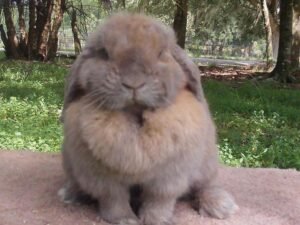
Fuzzy Lop Rabbit
Unlike other lop eared rabbits, the fuzzy lop’s furry ears are short. They are also tucked closely to the eyes of the fuzzy lop, adding appeal to their chubby cheeks. When exploring rabbit breeds, the standard eye color of this breed is brown. However, some have blue and red eyes. Its muzzle is somewhat similar to cats because of its flatness and shortness.
Temperament and Behavior
An American fuzzy lop is ideal for families with small children. It is because of this bunny’s playful and energetic behavior. Due to its high energy, a fuzzy lop loves to stay outdoors and eat fresh grass. When it is indoors, it prefers to stay with its furry parents or play with some toys. Putting pine cones, softwoods, and plastic balls in its cage is highly recommended.
With its friendly behavior, a fuzzy lop longs for attention from its owner. This breed will appreciate it if you carry it along and let it sit on your lap. If you cannot spend much time with this bunny, you should get at least one or two rabbit companions.
Most new rabbit owners prefer fuzzy lops because they are low maintenance. Only three things keep them happy: water, food, and love. These adorable creatures are also intelligent. There are plenty of tasks you can teach them, like litter and potty training.
The bucks and the does have affectionate personalities, but the does tend to get jumpy. Loud noises and sudden movements make them nervous. If you have a couple of does, make sure to put their cages in peaceful areas.
Grooming Fuzzy Lop Rabbits
Part of keeping a fuzzy lop rabbit is ensuring regular grooming. The coat of this cute bunny requires maintenance to prevent tangling and matting. Aside from its fur, you must also keep its nails trimmed. Here are some of the ways you can groom a fuzzy lop rabbit:
Hair brushing
Young American fuzzy lops are more challenging to groom compared to mature ones. It only takes 15 minutes every couple of weeks to maintain the coats of adult fuzzy lop rabbits. If your bunny is only about eight weeks, you need a lot of patience with its coat. Before brushing its hair, ensure that you have the proper comb. Since rabbits have sensitive skin, they can get rashes from the wrong kinds of brushes.
If your fuzzy lop undergoes molting, don’t be surprised if clumped furs suddenly appear. You only have to brush the layers of coat in a downward direction. It may take you an hour to remove the matting. You need to do this regularly for 3 to 4 days. If you are unsure what to do, don’t hesitate to go to a grooming shop.

Nail Trimming
Trimming the nail of your rabbit is essential to its health. Long nails usually affect the position of the bunny’s feet. If ignored, your rabbit may suffer from worn joints or dislocated bones. The long nails can also break accidentally, leading to the painful bleeding of your rabbit’s toes. Since rabbits’ nails are pretty hard, you need the proper nail cutter.
If you have enough time, you can cut your rabbit’s nails at least every other day. But if your schedule is tight, you can groom it twice a week. Have someone help you when trimming your rabbit’s nails. Rabbits tend to move their feet when they get nervous. So you need someone to hold it for you.
Proper Diet

feeding loose hay
Like other breeds, hay composes most of the fuzzy lop rabbit’s diet. The most recommended type of hay for an American fuzzy lop is Timothy hay. It is rich in fiber, ensuring that the gastrointestinal tract is in proper condition. Aside from that, it keeps the bunny’s teeth healthy. Since it is the primary food of the bunny, make sure that it has an unlimited supply.
In addition to hay, you must keep an unlimited water supply in the rabbit’s enclosure, especially if they have lop ears. Water helps rabbits to pass stool easily by removing all the waste. It is also vital in the process of nutrient absorption and the regulation of blood flow. As much as possible, the water must be placed in a deep bowl than a bottle.
You can also add vegetables and fruits to a fuzzy lop diet. However, you must give it in minor or moderate amounts. You must also be careful in providing veggies and fruits. It is because indigestible fibers may result in gastrointestinal stasis.
Here are some of the veggies and fruits you can give to fuzzy lop rabbits:
- Arugula
- Basil
- Bok choy
- Carrots
- Celery
- Cilantro
- Kale
- Radish tops
- Watercress
- Apple
- Banana
- Berries
- Papaya
- Peach
- Pineapple
Health Issues of Fuzzy Lop Rabbits
The thick, long coats of American fuzzy lop rabbits add to their beauty. However, these furs may also lead to some health issues. Here are some of the common health issues that fuzzy lop rabbits may experience:
Wool Block
Because of their thick and long coats, fuzzy lop rabbits are more prone to wool block. This condition happens when a rabbit grooms and ingests some of its furs. Since rabbits cannot vomit, the wool will get stuck into their intestines. It affects the digestion of the rabbits, leading to illness or death.
Some of the symptoms of the wool block are the following:
- Lethargy
- Appetite loss
- Aligned droppings
- Constipation
- Weight loss
- Discomfort
There are different ways to treat wool block, depending on the severity of the case. The vet may perform an abdominal massage to remove the obstruction in the rabbit’s intestine. Sometimes, digestive stimulants are given to the bunny to help it pass stool and expel the wool block. For severe cases, the vet may require surgery.
Fur Mites
Another health issue that you must watch for is fur mites. Lack of grooming usually results in the infestation of cheyletiella. It is also known as fur mites or walking dandruff. At first, it may be unnoticeable. But if left untreated, you will soon notice dandruff on the rabbit’s back and between its shoulder blades. Other symptoms may include sores in the itchy area and hair loss.
If you notice that your bunny is suffering from fur mites, go to the vet right away. The vet prescribes topical treatments that you can apply to the infected areas. If the case worsens, the vet may inject ivermectin into the bunny.
Conclusion
The American Fuzzy Lop rabbits, recognized as an adorable breed, are not only sociable but also known for their excellent temperament and appearance. They have become popular as prey animals, and special attention is required to avoid health issues stemming from inadequate grooming. To ensure the well-being of these recognized breeds, it is crucial to provide them with the proper care, diet, and affection.
